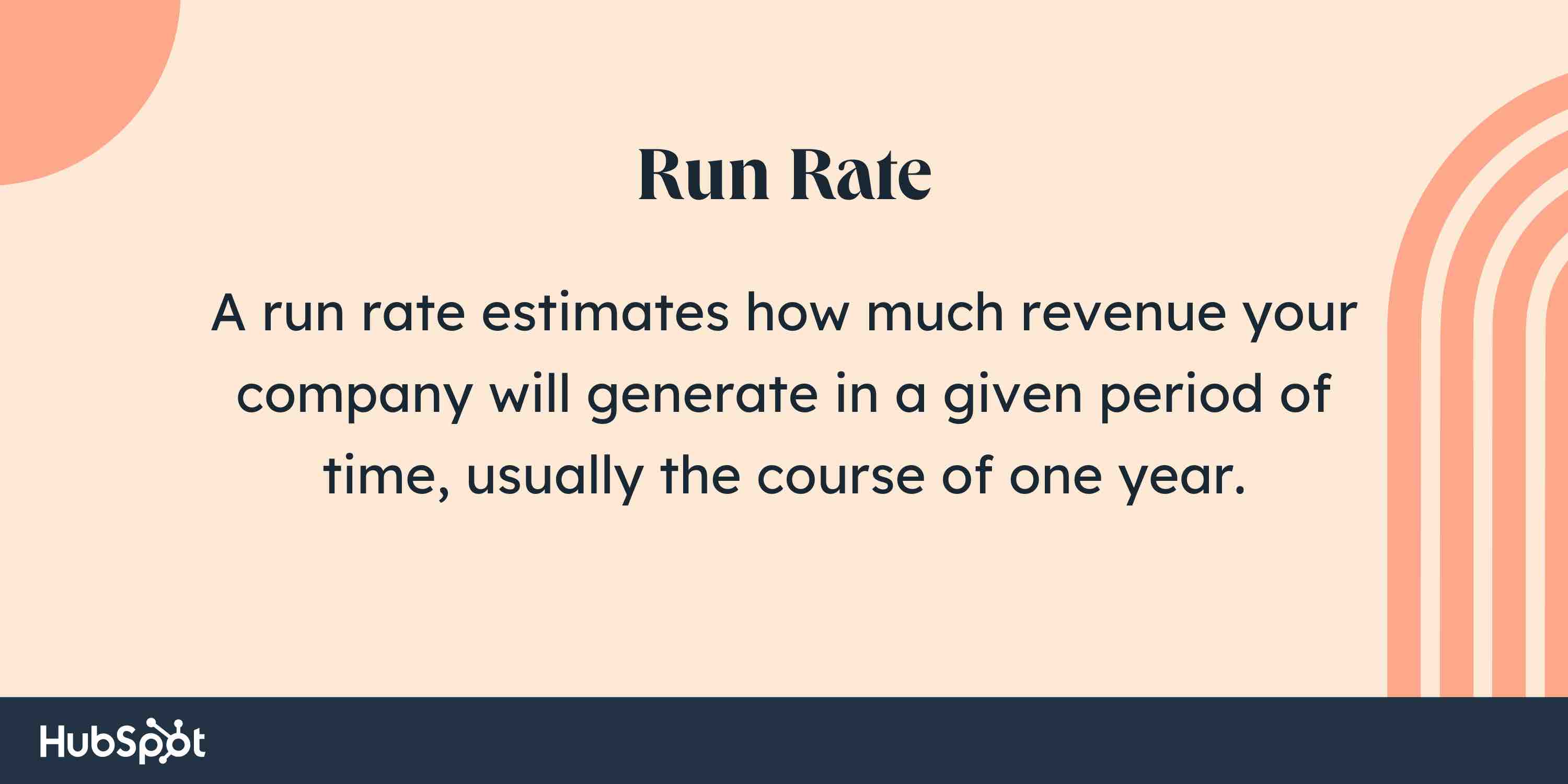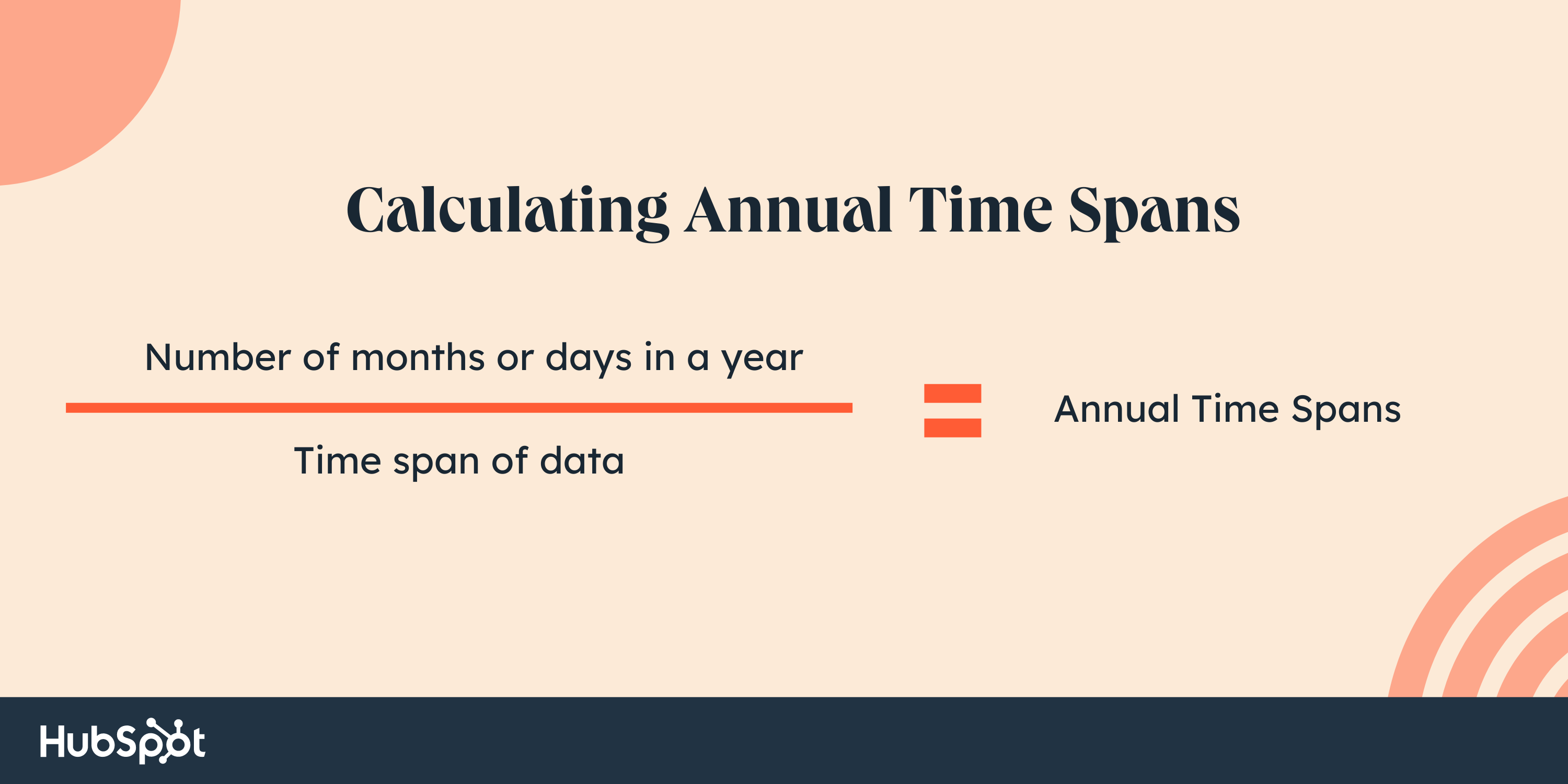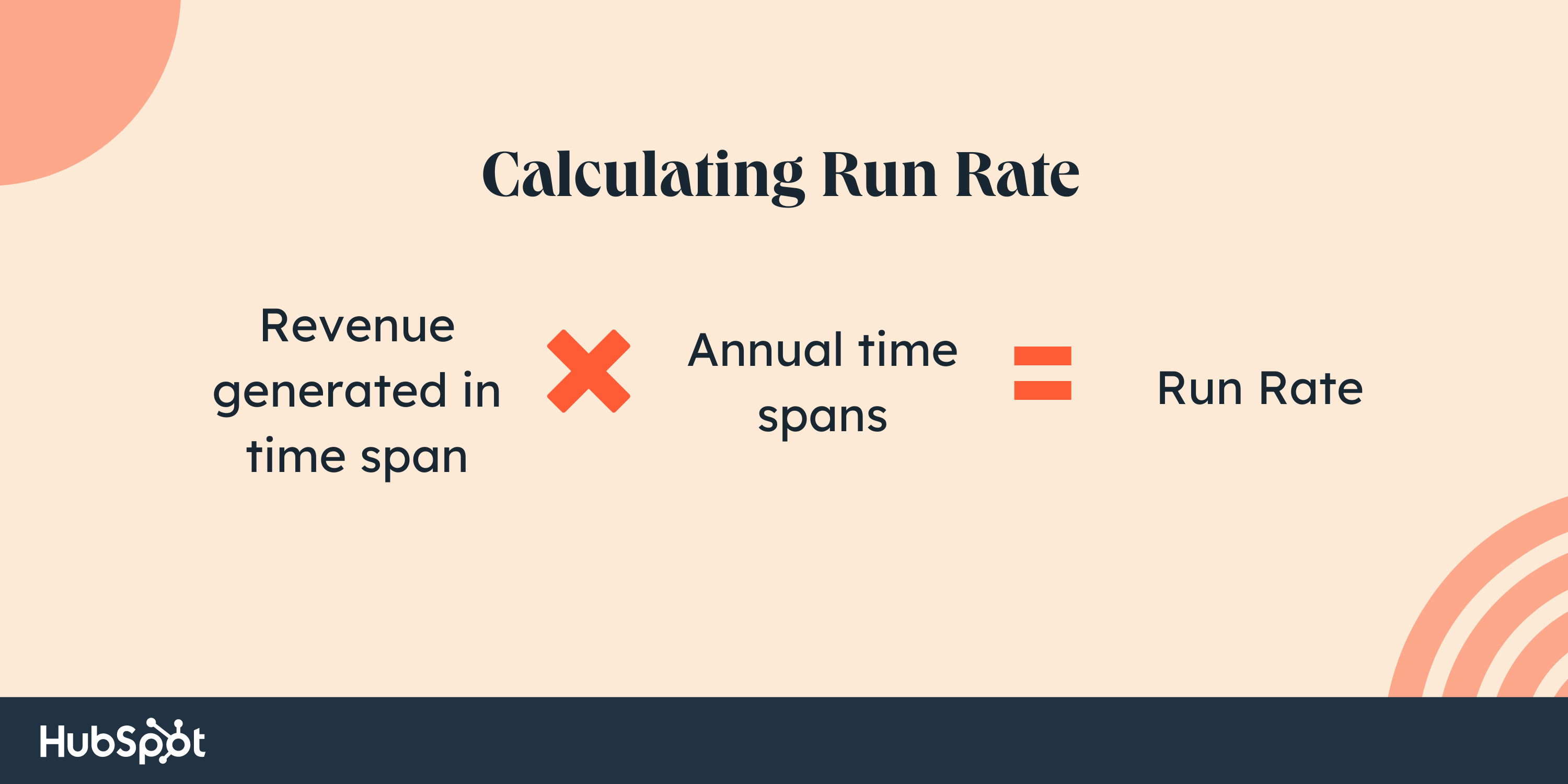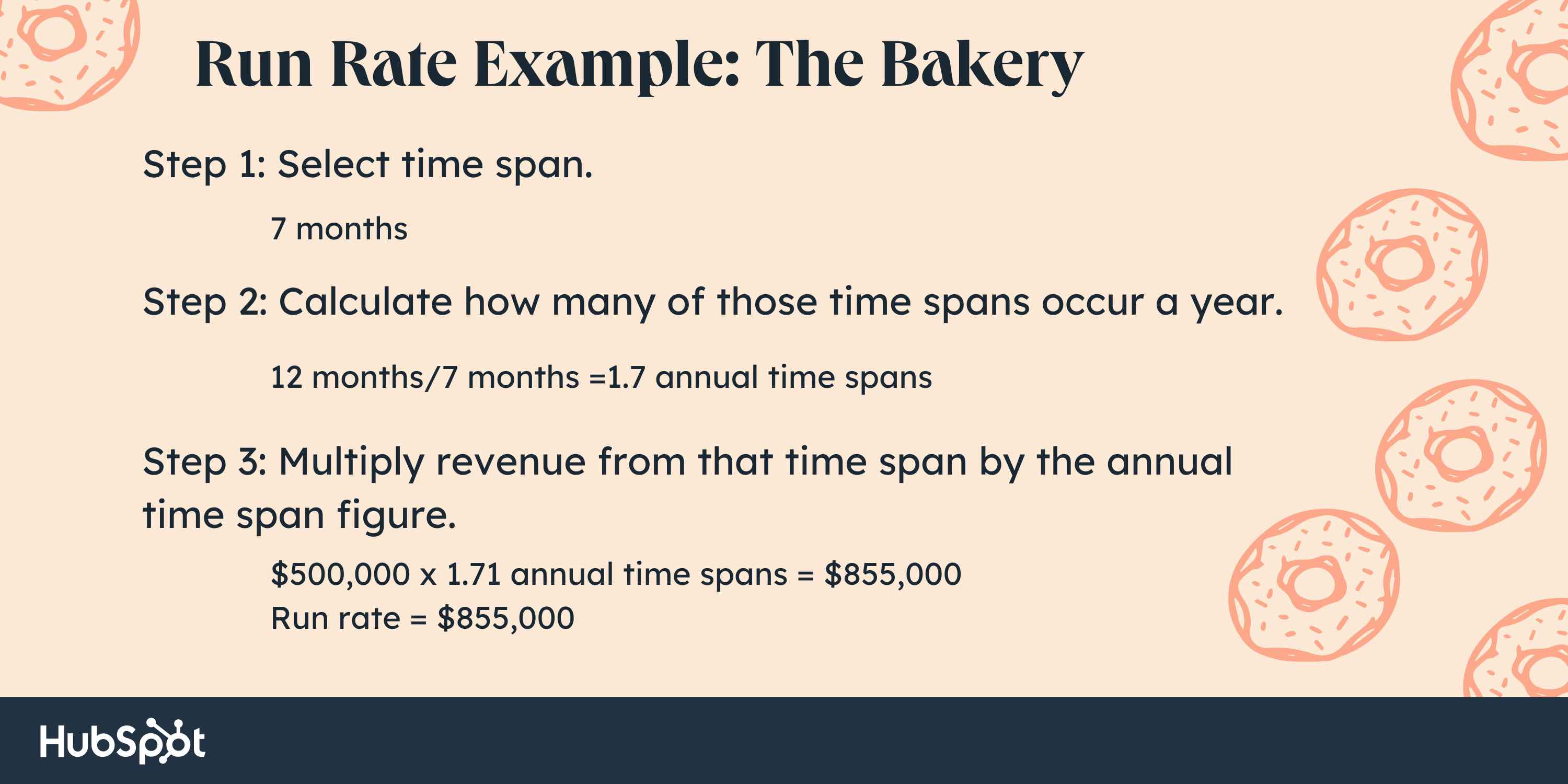Like top-notch weatherpeople, savvy business leaders are also responsible for accurate forecasting. A run rate, which shows how much revenue your company will generate in the near future, is one tool that can help.

It’s essential to calculate your run rate accurately to make decisions about your business’s future. In this article, you’ll learn what a run rate is and how to calculate it. You’ll also see examples of how run rates are used in the real world. Let’s dive in.
Cons of Run Rate
How to Use Run Rate

The Run Rate Formula
Now that you know what a run rate is, let’s discuss how to calculate it. The run rate calculation is relatively simple and only requires two pieces of information:
- Your company’s sales over a certain period of time.
- The number of days in that time period.
Calculating run rate is a two-step equation. First, you will need to determine how often your selected time span occurs in a year. This number becomes your annual time spans. To calculate annual time spans, use the following equation.

The next step is to use your annual time spans to calculate your run rate.

How to Calculate Run Rate
- Take your revenue over a specific length of time.
- Determine however many of those lengths of time occur in one year (i.e., one year is 12 months).
- Multiply those two figures.
Here’s an example of what that might look like. Let’s say you’re running a bakery. The company has only been in business for seven months. It has generated $500,000 in revenue up to this point and is now looking to gauge its future performance based on this existing data.
The sales team then decides to calculate the business’ run rate for the next seven months.

Companies often calculate their run rate on an annual basis. You can also measure your run rate monthly or quarterly.
Why is your run rate important?
The run rate is important because it gives you a snapshot of your company’s current sales and helps you predict future sales. This information is valuable when making decisions about your business’ growth strategy.
For example, if you’re considering opening a new store, the run rate can help determine whether the venture is feasible. If your run rate is $274.32 per day and you need to generate $300 per day to break even, then you know that opening a new store is not a good idea.
Pros of Calculating Run Rate
- Run rates are useful for new companies. The run rate can be a useful tool for new companies that don’t have a lot of historical sales data to work with. This is because the run rate is based on current sales and can be used to predict future sales.
- Run rates can accurately project long-term sales. The run rate is also an accurate projection for long-term sales. This is because it considers all of the company’s sales over a certain period, not just one month or one quarter.
Cons of Calculating Run Rate
- Your run rate can be misleading. The run rate can be misleading if your company’s sales fluctuate greatly from month to month or quarter to quarter. Run rate does not account for these fluctuations and can give you an inaccurate projection of your company’s future sales.
- Run rate only looks at past data. Your run rate only looks at past data and does not consider any external factors that could impact your company’s future sales. For example, if a recession is coming, your run rate will not take this into account. This could give you a false sense of security about your company’s future sales.
How to Use the Run Rate
Now that you know what a run rate is and how to calculate it, let’s discuss how to use this information.
Run rates can be valuable tools for forecasting your company’s future sales. If you’re considering making a major decision for your business, such as expanding your product line or opening a new store, your run rate can help you determine whether now is the right time to act.
However, don’t rely on your run rate alone. Consider your run rate in conjunction with other factors, such as your company’s historical sales data and knowledge of the current market conditions. This holistic picture can help guide your final decision.
Accounting


.jpg)
![Work Orders: What They Are & What They Look Like [Template]](https://2406023.fs1.hubspotusercontent-na1.net/hubfs/2406023/Imported_Blog_Media/Work%20Order%20(1).jpg)
![What's an Expense Report? [Why It Matters + Template]](https://2406023.fs1.hubspotusercontent-na1.net/hubfs/2406023/Imported_Blog_Media/expense-reports-fi%20(1).jpg)
